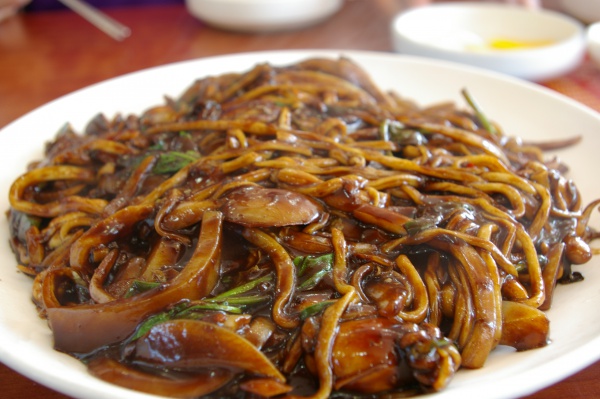Facts About Jajangmyeon
Jajangmyeon, sometimes spelled jjajangmyeon, is a beloved Korean noodle dish with Chinese origins. Imagine thick, hand-made or machine-pulled wheat noodles drenched in a rich, savory sauce made from chunjang (a black bean paste), diced pork, and an assortment of vegetables. There are also delectable variations featuring seafood or other meats.
The history of jajangmyeon dates back to 1905, when it was first introduced in a Chinese restaurant in Incheon Chinatown. Although it shares similarities with the Chinese dish zhajiangmian, jajangmyeon has evolved into a unique Korean favorite. By the mid-1950s, it had become widely popular in South Korea, largely because it was both affordable and easily accessible.
The name "jajang" comes from the Chinese word "zhajiang" which means "fried sauce" while "myeon" translates to "noodles." Preparing this dish involves cooking a thick sauce from chunjang, soy sauce, meat, seafood, vegetables, and a bit of starch slurry to achieve the perfect consistency. When served, it is often garnished with various toppings and accompanied by pickled radish, onions, and extra chunjang sauce for dipping.
There are several variations of jajangmyeon to explore. For instance, gan-jjajang features a dry sauce, while jaengban-jjajang is served on a plate. Yuni-jjajang utilizes ground meat, and samseon-jjajang includes seafood. If you prefer rice, you can try jajang-bap, or if you're a fan of tteok-bokki, there's a version with jajang sauce called jajang-tteok-bokki. For those in a hurry, instant jajangmyeon products are available, making it easy to enjoy this delicious dish on the go.

 North Korea
North Korea